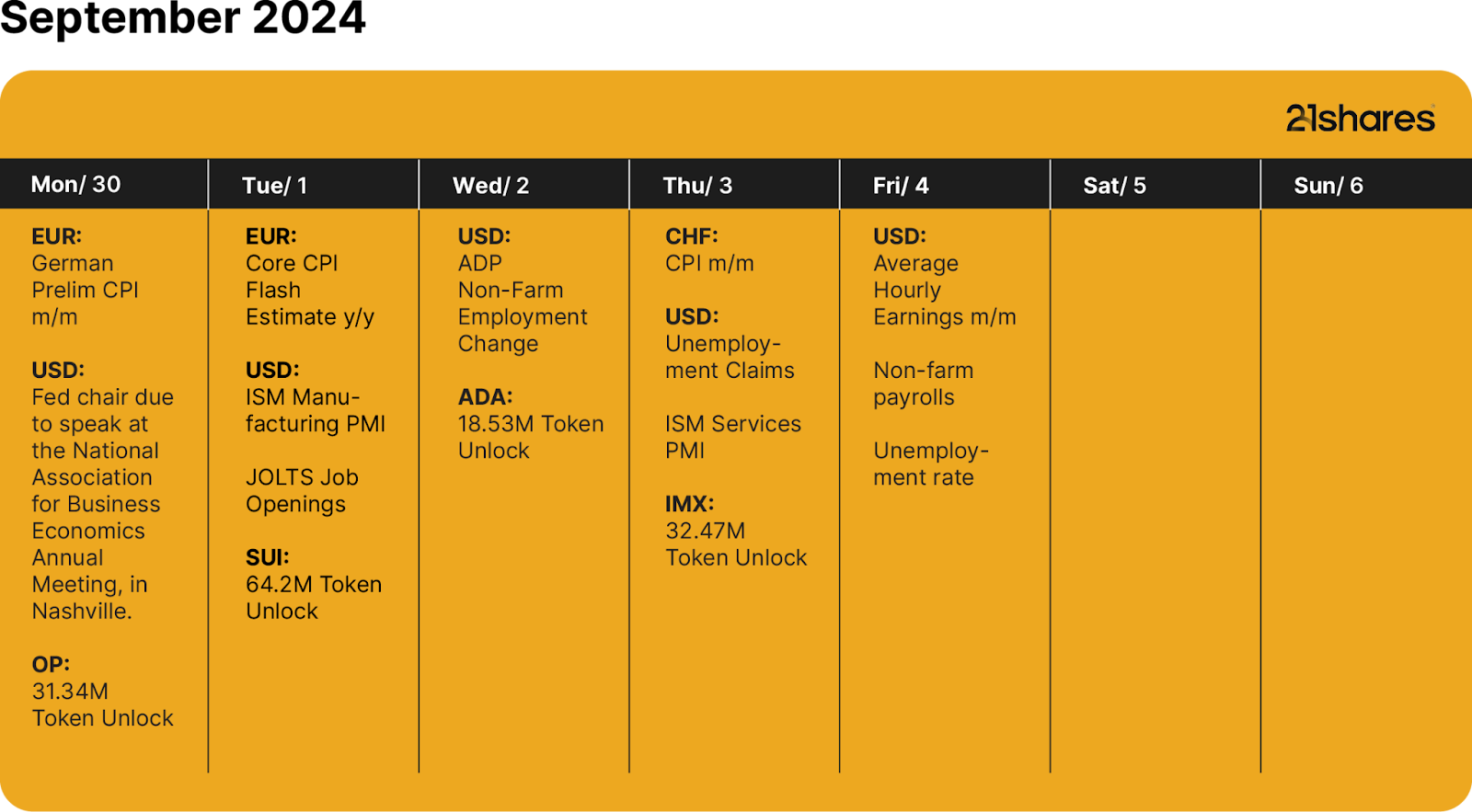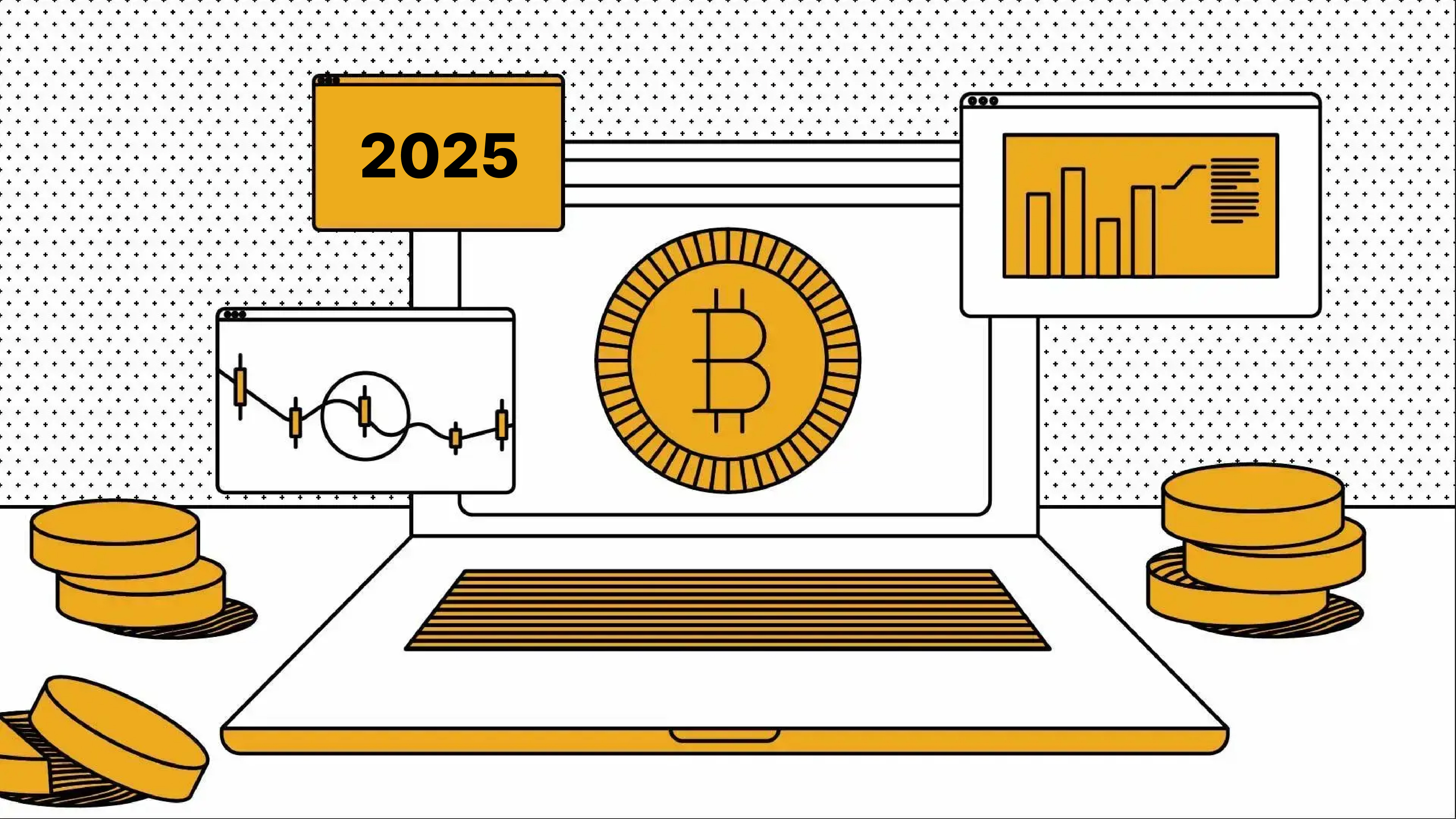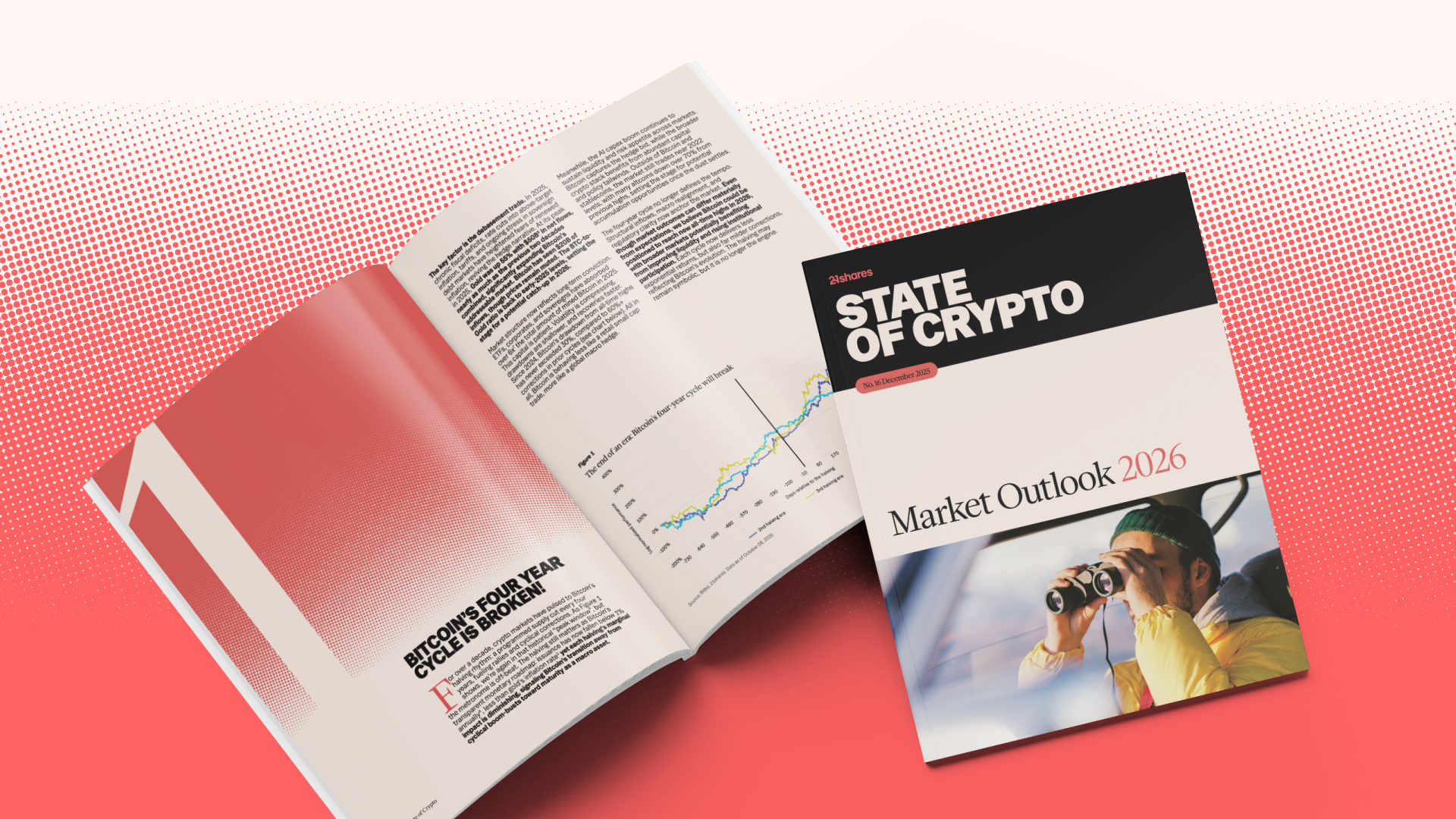Uptober Primed for a Bullish Run: Strong Labor Data and Cooling Wages Set the Stage for Bitcoin’s Next Rally



October has historically been a strong month for Bitcoin and the broader digital asset market, earning the nickname "Uptober" among crypto natives. In fact, 9 out of the 13 Octobers since Bitcoin began trading on exchanges have seen positive returns.
UPtober loading…
During halving years, October typically serves as the gateway to Bitcoin’s Q4 parabolic rally, which often extends into the following year, with the cycle peak occurring around Q4 of the next year. This pattern played out in October 2016, when Bitcoin started the month at $600 and soared to nearly $20,000 by Q4 2017—a staggering 33x return. We saw a similar trend in October 2020, when Bitcoin began just under $11,000 and reached a cycle high of over $69,000 in Q4 2021, delivering more than a 6x return. As we enter another October, all eyes are on whether history will repeat itself once again. And with similar trends to the last cycle—such as global rate cuts, favorable macro conditions, and a fresh wave of users adopting crypto—presenting themselves again, it looks like history might be primed for another repeat.
Figure 1: BTC Monthly Returns 2013-Present

Source: Coingecko
New and innovative use cases like DeFi, NFTs, and Gaming/Metaverse brought a wave of new users into the digital asset space during the last cycle. We saw celebrities like Justin Bieber and Eminem spending over $ 1 million on Bored Ape Yacht Club NFTs, while retail investors rushed into DeFi to chase yield farms offering over 100% APY. In this cycle, the landscape is evolving, taking shape around the burgeoning attention economy.
Community tokens and prediction markets are onboarding millions of new users, with these markets increasingly being referenced in mainstream media. Additionally, the introduction of ETH and BTC spot ETPs is offering a registered and more accessible way for institutions and retail investors to enter the crypto space, making digital assets more mainstream. Layer 2 solutions are making Ethereum, the largest Layer 1 smart contract blockchain, more scalable and affordable, while many projects are focused on improving the user experience and simplifying the UI/UX experience for the user. As a result, we’ve seen a surge in total value locked (TVL) this year, driven by more users coming on-chain, facilitated by Layer 2 solutions, and the ongoing efforts to enhance UI/UX in the ecosystem.
Much like in the previous cycle, the global macroeconomic backdrop is increasingly favorable for risk assets. Central banks around the world, including China, are beginning to implement quantitative easing measures, injecting liquidity into their economies. Meanwhile, the U.S. has kicked off its rate-cutting cycle with an aggressive 50bps reduction, a move that traditionally favors risk assets like Bitcoin and other digital assets. These actions create an environment of lower borrowing costs and increased liquidity, historically driving investors towards assets with higher return potential. Just as we saw in the previous cycle, this macroeconomic environment is priming the digital asset market for another bull run as central banks around the globe take measures that effectively push capital into markets, sparking demand for digital assets.
As we navigate the evolving landscape of digital assets, it's clear that both market cycles and macroeconomic factors play a critical role in shaping investor sentiment. While Bitcoin’s historical trends in October suggest the potential for significant upward momentum, it's crucial to consider the broader economic environment, including key labor market indicators like the JOLTS report. These metrics not only provide insights into the health of the economy but also influence the Federal Reserve’s policy decisions, which, in turn, affect liquidity and risk appetite for assets like Bitcoin and Ethereum.
U.S. Job Openings Surge in August: Implications for Fed Policy and Crypto Markets
The latest JOLTS report highlights a rise in U.S. job openings to 8.04 million in August, pointing to a resilient yet cooling labor market. This data holds significant implications for financial markets, including digital assets, as it shapes the Federal Reserve’s economic outlook and potential monetary policy moves. A stable labor market could sway expectations around future rate hikes or cuts, directly influencing liquidity and investor sentiment toward risk assets such as BTC, ETH, and other digital currencies. As a result, shifts in labor dynamics may offer valuable clues for the next move in crypto prices.
In August, the number of available jobs in the U.S. increased from 7.71 million in July to 8.04 million in August, surpassing economists' forecasts of 7.68 million and signaling underlying labor market strength. According to the Bureau of Labor Statistics, there are 1.1 job openings for every job seeker. Despite this growth, hiring remains sluggish, with factors like corporate profit margin compression and over-hiring in sectors such as healthcare contributing to the slowdown. However, layoffs have declined, and job cuts are not escalating—a key concern for the Federal Reserve, which is carefully monitoring the labor market.
Figure 2: Number of Unemployed Persons Per Job Opening. Seasonally Adjusted

Source: U.S. Bureau of Labor Statistics
Additionally, fewer workers are quitting their jobs, with the quit rate reaching its lowest level since 2020, reflecting worker caution amid the cooling market. While the labor market is stable, it faces challenges in generating sufficient job growth to ensure long-term robustness.
The JOLTS report, with its rise in job openings, suggests that the labor market remains strong but is starting to show signs of cooling, as seen in sluggish hiring and a decline in the quit rate. These shifts are crucial for the Federal Reserve as they weigh future monetary policy decisions, particularly rate hikes or cuts, which could directly influence liquidity and risk assets, including digital currencies like BTC and ETH. In tandem with the JOLTS data, the latest private nonfarm payroll figures for September provide further insights into labor market dynamics, showing stronger-than-expected job growth alongside moderating wage pressures. Together, these reports paint a comprehensive picture of a resilient, yet cooling, labor market that could shape the Fed’s next move.
Revised Nonfarm Payrolls Highlight Resilient Job Growth, Fueling Optimism for UPtober
U.S. private nonfarm payrolls grew by 143K in September, up from a revised 103K in August, surpassing the consensus estimate of 121.5K and indicating stronger-than-expected hiring momentum and continued resilience in the labor market. Medium and large businesses drove the bulk of this growth, adding 64K and 86K jobs, respectively, while small businesses shed 8K jobs, reflecting some unevenness in hiring trends. Wage growth moderated, with annual pay increasing 4.7% year-over-year, down slightly from the previous month. Notably, job switchers saw a significant slowdown in wage increases, with their year-over-year gain shrinking to 6.6%, a marked decline from August’s 7.3%. The gap in wage growth between job switchers and job stayers has also narrowed, suggesting a cooling in labor market dynamics.
Figure 3: 2024 Nonfarm Payroll Employment Revisions

Source: U.S. Bureau of Labor Statistics
The moderation in wage growth could play a pivotal role in shaping the Federal Reserve’s next rate-cut decision. Easing wage pressures, particularly the slowdown in wage gains for job switchers, signal a potential reduction in inflationary risks tied to labor costs. With wage growth stabilizing, the Fed may feel more comfortable with a dovish pivot, especially as it seeks to balance supporting economic growth while managing inflation. The continued resilience in job growth also suggests that the labor market can absorb further rate cuts without overheating.
However, the uneven hiring trends, particularly with small businesses shedding jobs, could prompt caution within the Fed as it evaluates broader economic conditions. If inflation data remains contained and wage growth continues to cool, this labor market report could provide the Fed with additional confidence to implement further rate cuts, potentially accelerating liquidity in the market, which would favor risk assets like BTC, ETH, and other digital assets.
As we enter "Uptober," a historically strong month for Bitcoin and the broader digital asset market, there are several positive catalysts that could propel the next rally. Alongside Bitcoin's seasonal momentum, the labor market data, including the JOLTS report and the stronger-than-expected nonfarm payrolls for September, suggest that while the U.S. labor market remains resilient, cooling wage growth and uneven hiring trends may provide the Federal Reserve with enough confidence to continue easing monetary policy. This dovish shift could inject further liquidity into the financial system, benefiting risk assets like BTC and ETH. With macroeconomic conditions aligning favorably—similar to previous bull cycles—October is once again shaping up to be a pivotal month for digital assets, reinforcing the anticipation that history might repeat itself as we move further into Q4.
Market Sentiment Gauge: Fear and Greed Index
A glance at the Fear & Greed Index, a multifactorial tool that analyzes crypto market sentiment, shows a shift from slight greed last week to a slightly fearful stance this week. The indicator is currently reading a 42. This marks a notable change from last week’s reading of 59; sharp moves like these typically present a nice “buy the dip” moment.
Figure 4 – Fear & Greed Index

Source: Alternative.me
What’s happening this week?

The information provided does not constitute a prospectus or other offering material and does not contain or constitute an offer to sell or a solicitation of any offer to buy securities in any jurisdiction. Some of the information published herein may contain forward-looking statements. Readers are cautioned that any such forward-looking statements are not guarantees of future performance and involve risks and uncertainties and that actual results may differ materially from those in the forward-looking statements as a result of various factors. The information contained herein may not be considered as economic, legal, tax or other advice and users are cautioned to base investment decisions or other decisions solely on the content hereof. All content provided by 21Shares is intended for informational and educational purposes only and should not be considered investment advice or a recommendation to buy, sell, or hold any particular security. Investments associated with crypto assets, such as cryptocurrencies and crypto tokens, involve risk. These assets are considered highly speculative due to their limited history and new technological nature. Future regulatory actions may impact the usability and tradability of crypto assets. The price of crypto assets can be influenced by a small number of holders and may decline in popularity or acceptance, affecting their value. For full disclosures, please visit our Disclaimers and Terms &Conditions pages.









.svg)



_logo.svg)

.svg.png)